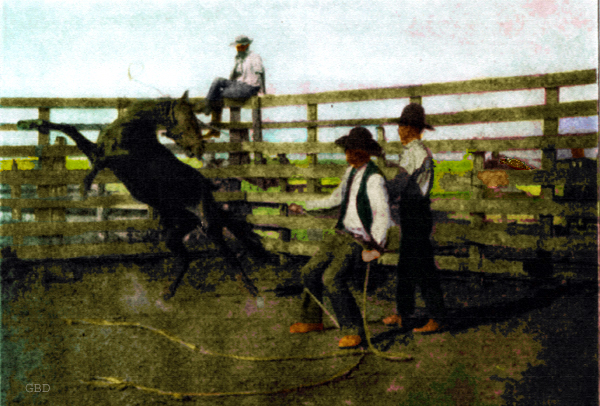
Breaking a Bronco, G. B. Dobson from photo by E. E. Smith, 1908
An essential part of ranching was the care and breeding of horses. In the early years of Wyoming, as previously noted wild horses could be
found in many parts of the Territory. Indeed, even today wild horses can be found in the Red Dessert,
and near Meeteetse. On September 24, 1887, the London Graphic published a panel of illustrations entitled
"Capturing Wild Horses on the Laramie Plains, North Western America" by Alfred Chantrey Corbould (1852-1920). Corbould was a member of
a large family many of whom were famous artists. Corbould's father was a well known artist of horses. Corbould was, himself,
also noted for his illustrations of horses primarily in sporting events.
In addition to providing
pen and ink drawings for the Graphic, he later provided drawings to the Illustrated London News, Punch and others. He served
as a war correspondent during the Battle of Plevna (present-day Bulgaria) during the Russo-Turkish War. In the battle, the
Russians were badly defeated by the Turks thereby precluding Russia's quest for a warn-water port.
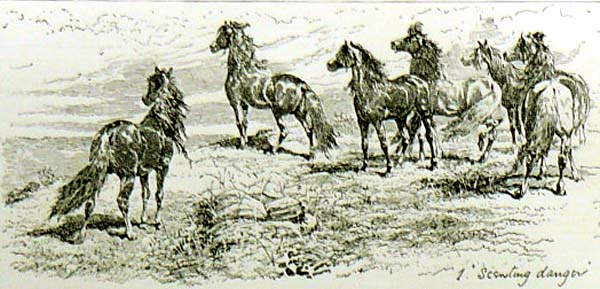
"Scenting Danger"
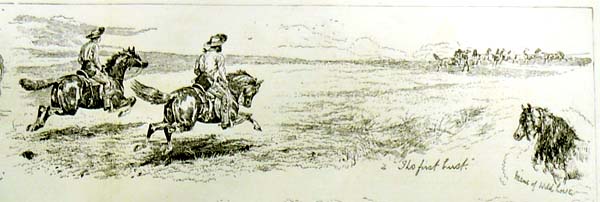
"First Hunt"
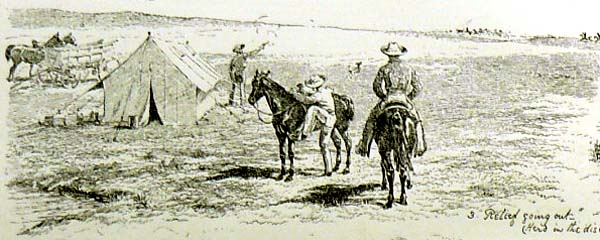
"Relief going Out" (herd in Distance)

"Dead Last"

"The Return With Our Captives"
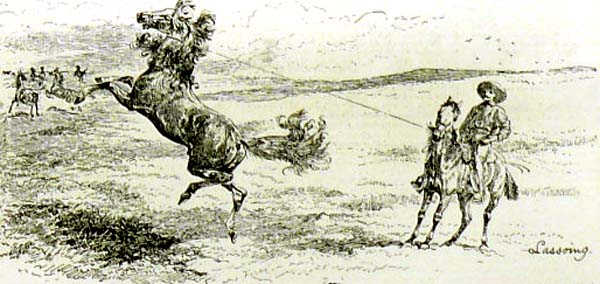
"Lassoing"

"Hobbling the Captives"
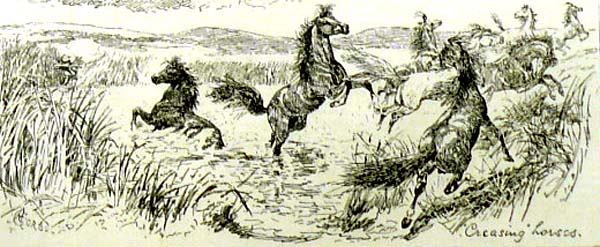
"Creating Horses"
Next Page, Capturing Wild Horses in the Red Desert, Frank Robbins.
|